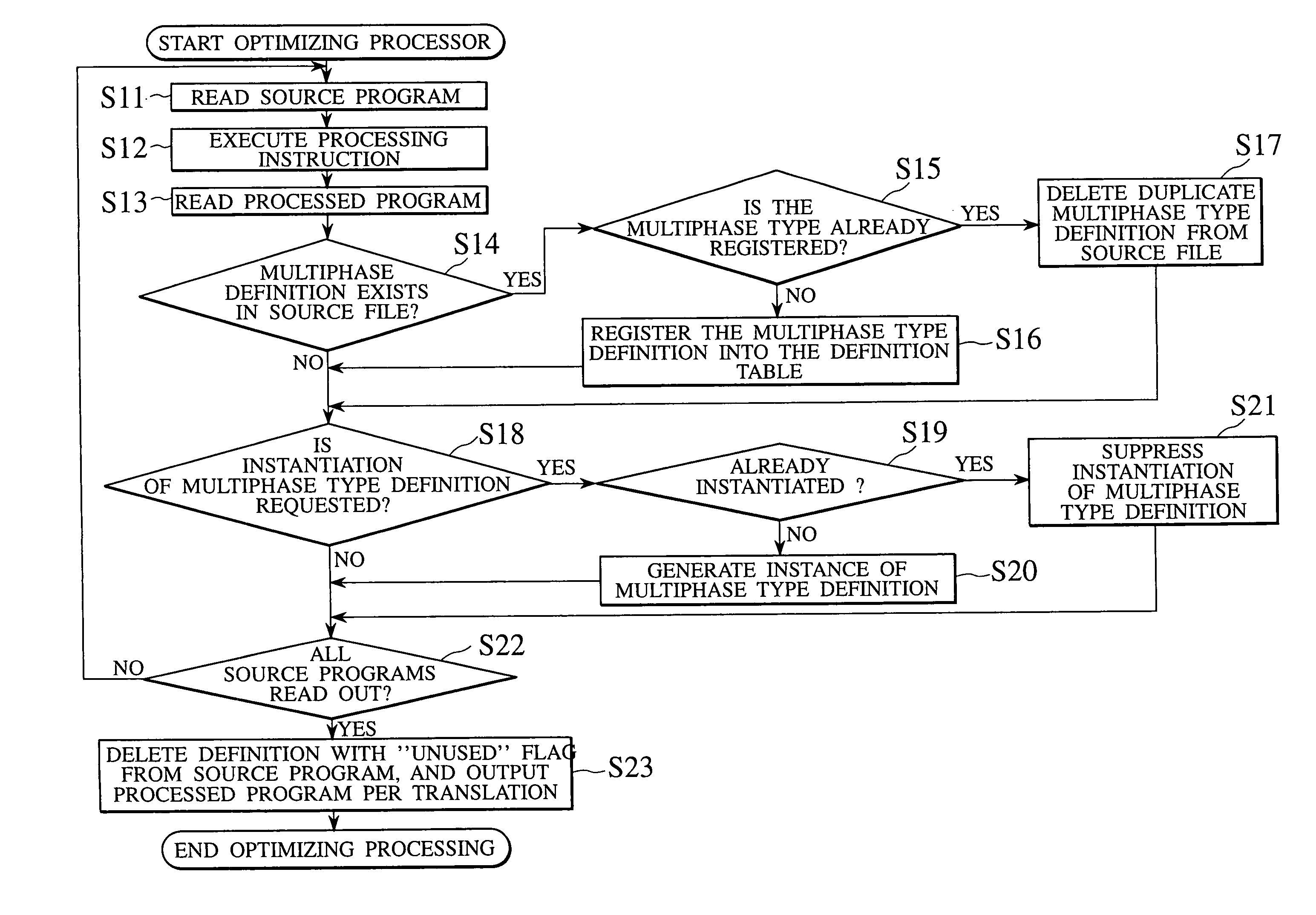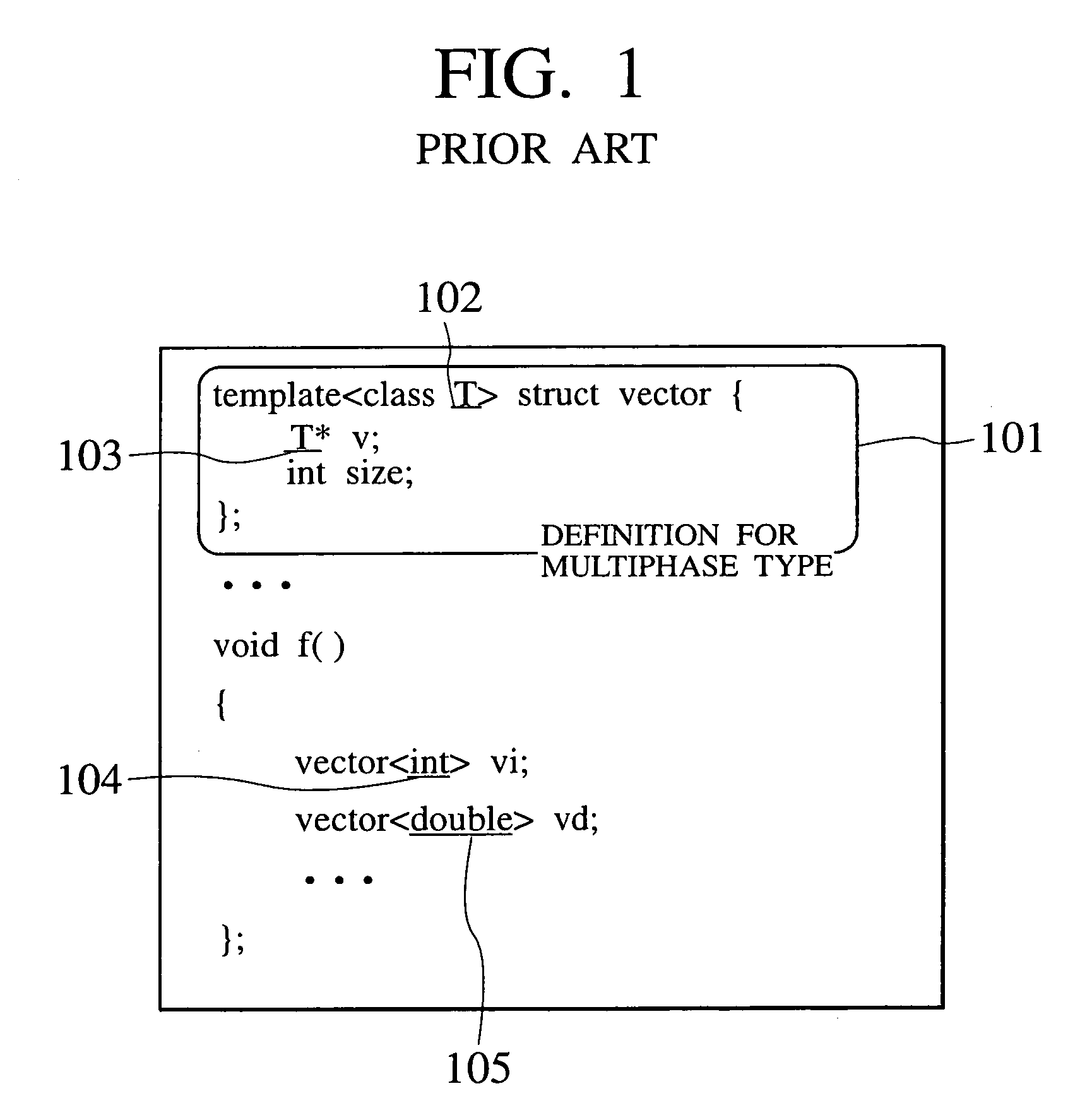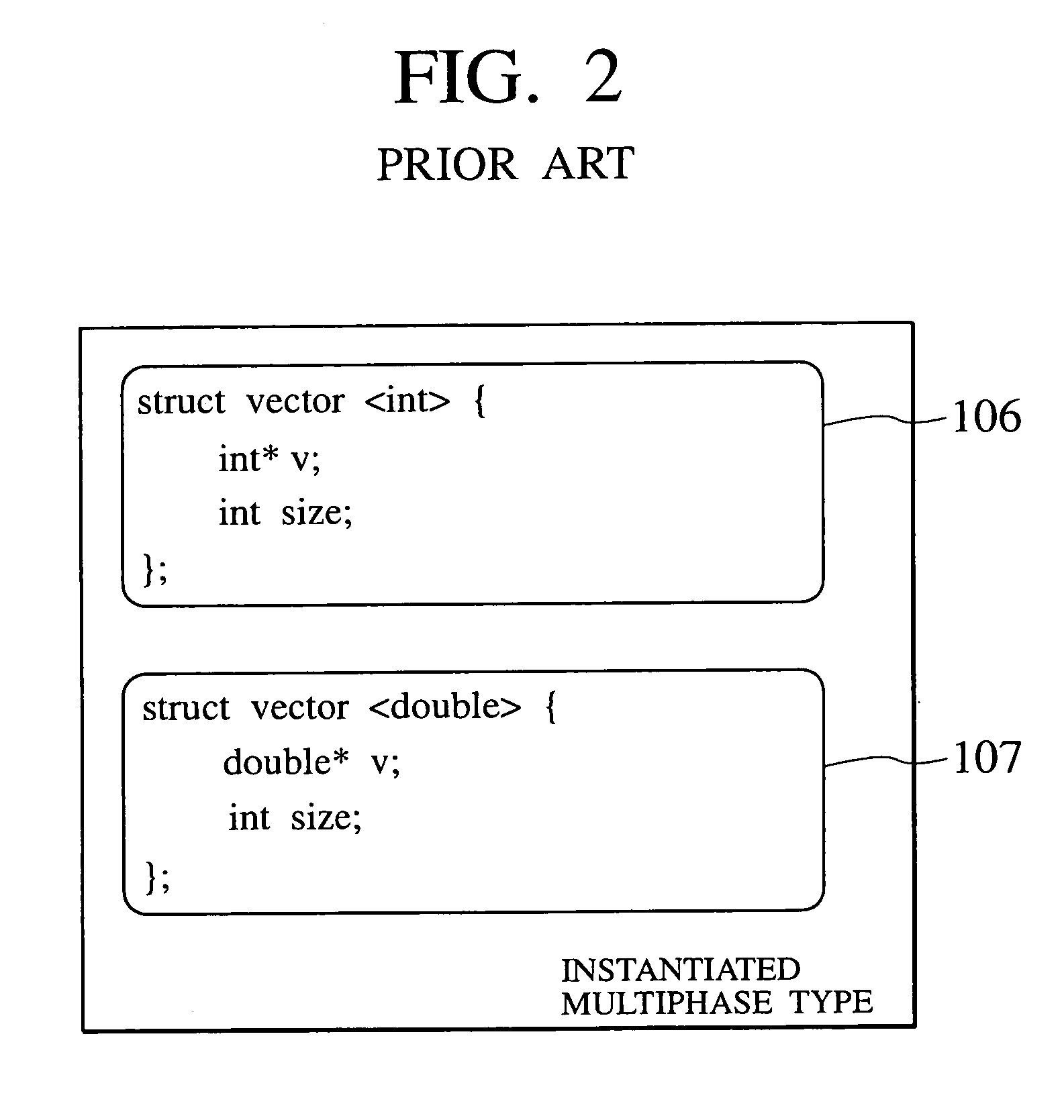System for optimizing data type definition in program language processing, method and computer readable recording medium therefor
a program language and multi-phase technology, applied in the field of system for optimizing a multi-phase type definition in program language processing, can solve the problems of difficulty in detecting a definition for a function, and low flexibility of file configuration, so as to facilitate the detection of a definition
- Summary
- Abstract
- Description
- Claims
- Application Information
AI Technical Summary
Benefits of technology
Problems solved by technology
Method used
Image
Examples
first embodiment
[0069]A program language processing system according to the first embodiment of the present invention will be described below with reference to FIGS. 12 to 16.
[0070]The first embodiment provides a function of removing a duplicate data type definition for a multiphase type from a source file in a source program group for generating one object program and a function of avoiding the duplicate data type definition from being instantiated.
[0071]FIG. 12 is a block diagram showing the basic configuration of a program language processing system according to the first embodiment of the present invention.
[0072]The program language processing system according to the first embodiment comprises a software driver 1, a preprocessor 3, an optimizing processor 4, a language processor (compiler) 5, and a linker 6 to generate an object program 7 from a source program group 2. Of these elements, the preprocessor 3, the language processor 5, and the linker 6 have the same functions as those of the prepr...
second embodiment
[0092]Next, only different points between a program language processing system according to the second embodiment of the present invention and the program language processing system of the first embodiment will be described below with reference to FIGS. 14, 17 and 18.
[0093]As to the second embodiment, registration into a multiphase type definition table and generation of an instance with respect to, especially, a multiphase type function definition in the configuration of the first embodiment is described below.
[0094]FIGS. 17A and 17B are diagrams for explaining an exemplary registration of a multiphase type function definition into a multiphase type definition table 4b according to the second embodiment.
[0095]When the optimizing processor 4 according to the second embodiment reads preprocessed source programs f1 and f2 (step S13 in FIG. 14) and detects a multiphase type function definition 51 (step S14 in FIG. 14), the optimizing processor 4 checks on the basis of definition inform...
third embodiment
[0107]Next, a program language processing system according to the third embodiment of the present invention will be described in detail with reference to FIG. 14 and FIGS. 19 to 21.
[0108]In the third embodiment, in the configuration of the first embodiment, with respect to, especially, a multiphase type member function definition, registration into a multiphase type definition table and instance generation is described.
[0109]FIGS. 19A and 19B are diagrams showing a registration of a multiphase type member function definition into a multiphase type definition table 4c according to the third embodiment of the present invention. FIG. 20 is a flow chart showing a procedure of optimizing processing of a multiphase type member function according to the third embodiment. This processing is executed in generation processing for a multiphase type instance (definition) in step S20 in FIG. 14.
[0110]The optimizing processor 4 reads a preprocessed source program f3 shown in FIG. 19A (step S13 in...
PUM
 Login to View More
Login to View More Abstract
Description
Claims
Application Information
 Login to View More
Login to View More - R&D
- Intellectual Property
- Life Sciences
- Materials
- Tech Scout
- Unparalleled Data Quality
- Higher Quality Content
- 60% Fewer Hallucinations
Browse by: Latest US Patents, China's latest patents, Technical Efficacy Thesaurus, Application Domain, Technology Topic, Popular Technical Reports.
© 2025 PatSnap. All rights reserved.Legal|Privacy policy|Modern Slavery Act Transparency Statement|Sitemap|About US| Contact US: help@patsnap.com



